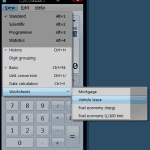Kill Multiple Processes at Once Via Command Line with Taskkill
Ever have a program or process that doesn't end properly and runs in the background continuously? I recently encountered this issue with VLC on one Windows 7 machine where it keeps the process never terminates. Since I never reboot the machine for other than Windows Updates, this amounted to 633 copies of VLC running in memory. Each process only used about 633k so it wasn't an astronomical memory hog but multiply that by 633, you begin to feel the machine slowing down. Task Manager doesn't let you kill multiple processes in bulk and I didn't want to go through killing them one by one or rebooting. The solution? Good old command line. Open up command prompt (start -> run -> cmd.exe). This snippet will kill all processes that start with the taskname:
Drobo Dashboard Can’t Connect to Drobo when ESET Firewall is Active
Have a Drobo storage unit? If you have ESET Smart Security Firewall enabled, you'll probably find Drobo Dashboard can't connect while the firewall is on even after adding all the required ports and services to ESET's rules from the Drobo online help site (http://goo.gl/iVKVU). After enabling the detailed logging in ESET, I found that ESET's firewall was flagging Drobo Dashboard as an intrusion attempt and blocked it. From the Drobo help page (http://goo.gl/iVKVU):
‘Windows XP Mode’ could not be started because there are not enough system resources or memory in your computer. You can shut down other virtual machines or close open applications and try again.
If you're running Windows 7 and try to install Windows XP mode, you might run into the error "'Windows XP Mode' could not be started because there are not enough system resources or memory in your computer. You can shut down other virtual machines or close open applications and try again." You'll need to find the app causing the problem. You can use msinfo to figure out which apps are resource intensive.
Did you know…?
Windows 7 sports tons of new features and surprises that have gotten little to no fanfare.
Did 
